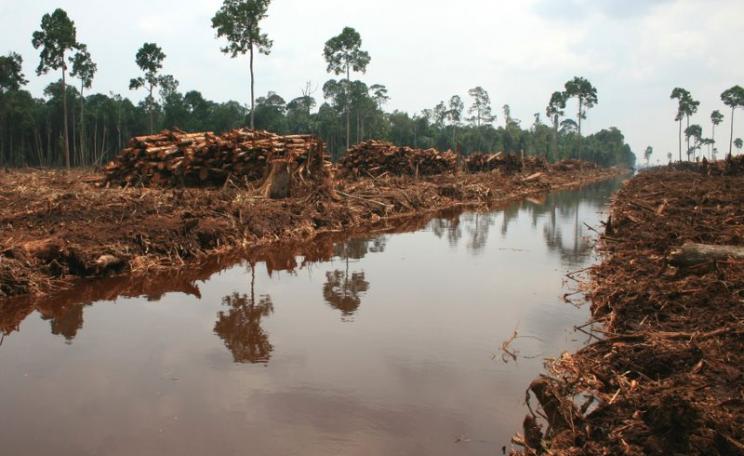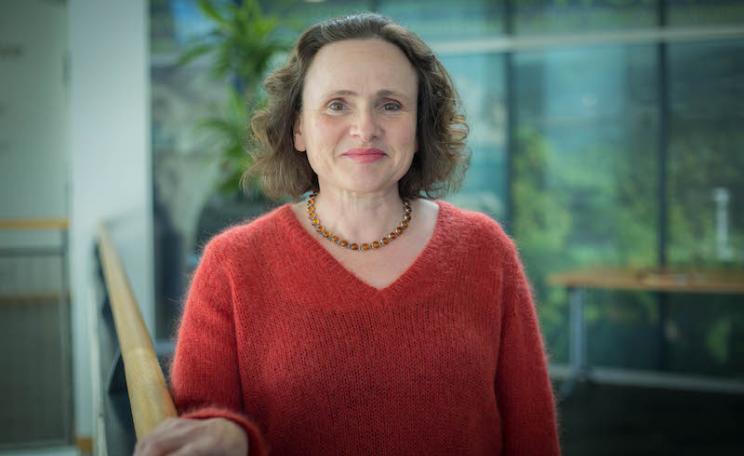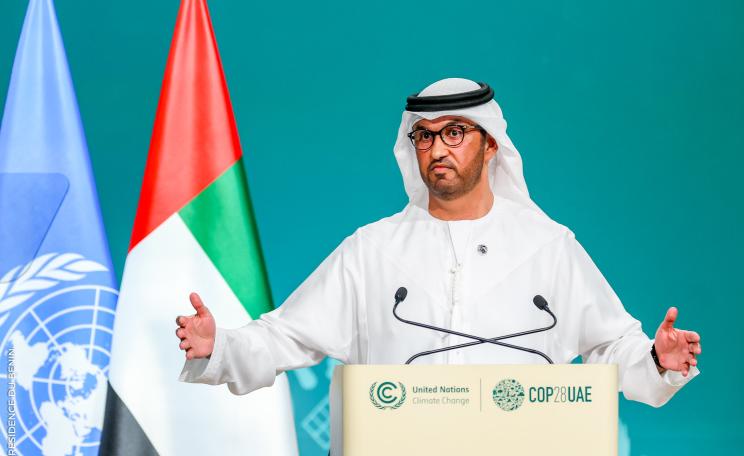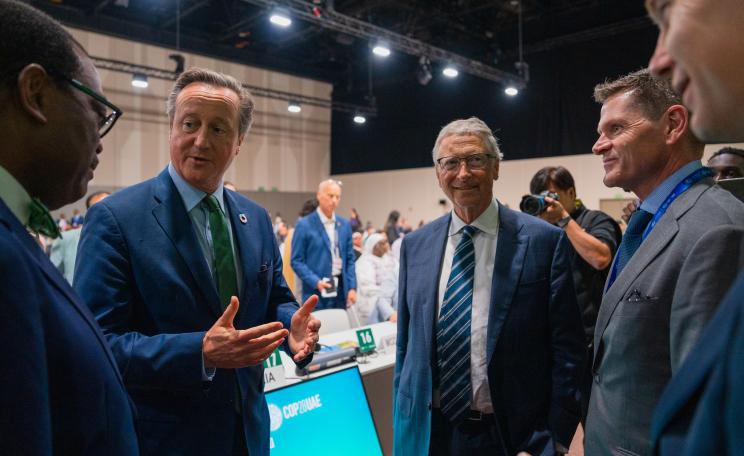Even if we achieve the reduction of emissions as calculated by the carbon budgets, there is no strategy for reducing current levels of atmospheric carbon that will see temperatures rising to well over 3ºC, no matter what emissions reductions are achieved
2016 has been smashing world records for heat temperatures month on month, with the Arctic as a whole looking like it will show a sea-ice minimum that is equal to the historic low of 2012.
79N Glacier is the name of the largest ice shelf that this small ice-shelf tributary, known as the Spelte Glacier, buttresses against. This upward pressure on the larger glacier causes a slowing of the loss of the melting ice flowing into the sea.
"The more ice is lost from the fronts, the less resistance there is, and the faster Greenland loses its ice", explains Professor Box.
He goes on to explain that the ice sheet is responding to the warming of the atmosphere in complex ways that, although caused by humanity's burning of fossil fuels, will not be advantageous to us in the long-run. This interconnectedness of the climate system is demonstrated by what we are seeing in Greenland.
The Arctic is heating much faster than other parts of the planet, and the loss of sea ice cover is rapidly accelerating this effect. The rise in temperature has a very serious effect on the Greenland ice sheet, as Professor Box explains here:
"The Greenland Ice Sheet has a kind of dome shape and warming brings more rapid melting at that point. Because the slope gets more gradual the higher you go, for every degree of warming, it actually has an exponential increase in the area of melting. This is because it is getting flatter. It eventually blows up and then you get warming at the highest points over the ice-sheet."
Box stresses that the Greenland ice sheet has been beyond its threshold of viability for over 20 years now and the situation, far from improving, is actually worsening:
"The longer we stay beyond that threshold, then the enhanced flow [of meltwater] can lower the surface [of the ice-sheet] down into warmer parts of the atmosphere.
"Fundamentally, that is the irreversibility factor for Greenland: melting and induced thinning. If we get enough slumping and drawdown of the inland areas of the ice sheet, that in effect is irreversible. That's the death sentence for the ice sheet.
"It then really becomes a matter of how long does the ice sheet spend beyond its threshold? Given the expected climate trajectory that we are on, it is nothing but more warming, it effectively dooms the ice sheet!"
The sheer size of Greenland demands an real effort of imagination to understand. It's an area roughly three times the size of France and spanning three lines of latitude from 59º to 83º North. The ice sheet itself is over 3 kilometers thick in parts, with more than 200 glaciers over 1 kilometer across, and 45 glaciers over 5 kilometers across.
With such a large and complex area to survey, scientists are only just discovering what the effects of climate change will be on the ice sheet and what are the likely impacts are on human civilisation.
"There are a number of factors that are pushing Greenland beyond its threshold and one of them is the melt-water that is draining into the ice. That amount of melt-water has doubled in the last 50 years. The temperature of that water is several degrees warmer than the ice is internally. So that has an internal heating effect. Internal ice heating is softening the ice and that makes it flow faster."
Even if we achieve the reduction of emissions as calculated by the carbon budgets, there is no strategy for reducing current levels of atmospheric carbon that will see temperatures rising to well over 3ºC, no matter what emissions reductions are achieved
Box also explains that melt-water draining down to the bottom of the ice sheet is causing basal sliding ? literally the lubricating of the ice sheet at its base, which is causing it to further slide.
"Then there's the ocean, there's an interaction there. The melt-water eventually makes it out into fjords and drives a heat exchange with a warming ocean that de-stabilises the largest outlet glaciers right at their grounding line. That is where the ice begins to float.
"Because of the ice being eroded from below in the fjords, we are losing the ice shelves. Just in the last twenty years about three quarters of the area lost has been in north Greenland and those have been ice shelves. There are hardly any ice shelves remaining in the Arctic because they are very sensitive and they are eroding quickly."
Impacts of Greenland melting
With all these processes amplifying the rate at which ice melts and as the region becomes warmer, much of the attention has focused on the risk posed to coastal areas from sea-level rise. Greenland has the potential to create a sea-level rise of over seven metres if it were to fully melt.
Considering that most of global agriculture and an enormous amount of our societal infrastructure lies at less than a metre above sea-level, it is clear that we do not need to wait centuries to be concerned about what is happening in Greenland.
The melt of the ice sheet is already a major contributor to accelerating sea-level rise, noticeably impacting places like Florida in the USA.
The 'cold blob'
Other effects that have been observed relate to the fresh water 'cold blob' that is forming in the north Atlantic. This cold blob has been linked to extreme flooding events we have seen in the UK and other parts of north-west Europe.
"In the last few years we have started to think beyond the obvious impact of land ice loss, that is sea-level rise. That problem is a big, big problem, especially later in the century. There are other impacts from Greenland melting and they include the oceanographic disruption in the north Atlantic.
"There has been an accumulation of some thousands of square kilometres of freshwater in the north Atlantic and that has been contributing to a slowdown of an important ocean circulation. The effect of that is a cooling at the surface of the north Atlantic, just south of Iceland. With the cold pool, there have been record cold sea surface temperatures at a time when global temperatures have been record warm in the atmosphere.
"That temperature contrast of the cold pool with warm water adjacent to it to the south ... that actually strengthens storms! So storms drifting over this cold pool are strengthened and they can run into north western Europe and this has been happening."
A good example of this is the flooding that took place in late 2015 in the UK and Ireland, where huge floods caused chaos. These climate change induced floods coincided with the timing of the UNFCCC conference in Paris COP21 that produced the historic 'Paris Agreement'.
As Professor Box and many others have pointed out, even if we achieve the reduction of emissions as calculated by the carbon budgets, there is still no strategy for how we reduce the current levels of atmospheric carbon that will see temperatures rising to well over 3ºC, no matter what emissions reductions are achieved.
The current warming trajectory means that Greenland's ice sheet will stay beyond its threshold of viability for the foreseeable future. This means that a concerted determination between policymakers, civil society and investors is required if we are to reduce the risks of worsening impacts in the future:
"Greenland is being pushed beyond its threshold of viability so that if warming continues as we expect, we effectively lose the Greenland ice sheet. It takes some centuries to lose half of the volume but even losing a small fraction of that volume is already a problem.
"That brings the relevance of the matter much closer to the present... but what makes a lot more sense for people and policymakers is the next 50 years. We are already seeing threatening problems in that timescale and that just shows the severity of it, because the problem is not just going away 50 years from now, the problem is getting worse."
Nick Breeze is a climate change journalist and interviewer. He blogs at Envisionation and tweets @NickGBreeze.
This interview with Professor Jason Box was recorded by Nick Breeze in Copenhagen, September 2016.






